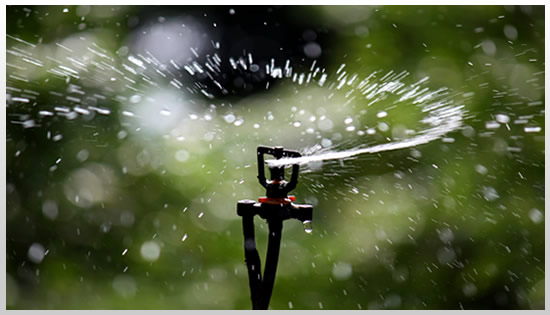FINE-TUNE YOUR IRRIGATION SYSTEM = SAVE MONEY AND SEE BETTER RESULTS

Residential irrigation systems offer convenience in protecting your landscape investment. The proper irrigation system allows you to enjoy your yard, keep it healthy and beautiful while you water efficiently, and save time and money.
With some simple practices and new technology, existing irrigation systems can be made more efficient, lowering your water bill, reducing run-off and eliminating waste. Water-wise habits will result in a healthier lawn and landscape, in addition to conserving water.
The Irrigation Association offers these water-saving tips to maintain and update automatic irrigation systems:
1- Adapt your watering schedule to the weather and the season. Familiarize yourself with the settings on your irrigation controller. Adjust the watering schedule regularly to conform with current weather conditions.
2- Schedule each individual zone in your irrigation system. "Scheduling" accounts for the type of sprinkler, sun or shade exposure, and the soil type for the specific area. The same watering schedule should almost never apply to all zones in the system.
3- Inspect your system monthly. Check for leaks, broken or clogged heads, and other problems, or engage a certified irrigation professional to regularly check your system. Clean micro-irrigation filters as needed.
3- Inspect your system monthly. Check for leaks, broken or clogged heads, and other problems, or engage a certified irrigation professional to regularly check your system. Clean micro-irrigation filters as needed.
4- Adjust sprinkler heads. Correct obstructions that prevent sprinklers from distributing water evenly. Keep water off pavement and structures.
5- Get a professional system audit. Hire a professional to conduct an irrigation audit and uniformity test to make sure areas are being watered evenly. This can be especially helpful if you have areas being under-watered or brown spots. The Irrigation Association maintains an online list of IA Certified Landscape Irrigation Auditors.
6- Consider "smart" technology. Climate or soil moisture sensor-based controllers evaluate weather or soil moisture conditions and then automatically adjust the irrigation schedule to meet the specific needs of your landscape. Learn more at www.irrigation.org.
7- Install a rain shutoff switch...inexpensive and effective. Required by law in many states, these money-saving sensors turn off your system in rainy weather and help to compensate for natural rainfall. The device can be retrofitted to almost any system.
8- Consider low volume drip irrigation for plant beds. Install micro irrigation for gardens, trees and shrubs. Micro irrigation includes drip (also known as trickle), micro spray jets, micro-sprinklers, or bubbler irrigation to irrigate slowly and minimize evaporation, runoff and overspray.
9- Water at the optimum time. Water when the sun is low or down, winds are calm and temperatures are cool - between the evening and early morning - to reduce evaporation. You can lose as much as 30 percent of water to evaporation by watering mid-day.
10- Water only when needed. Saturate root zones and let the soil dry. Watering too much and too frequently results in shallow roots, weed growth, disease and fungus. Best advice for a healthy, drought- and stress-tolerant lawn and landscape: use less water.
These tips will help keep more money in your wallet instead of sending it down the drain.
Source:
Landscape Ontario - Irrigation Sector Group
Article: Fine-Tune Your Irrigation System = Save Money and See Better Results
www.ontarioirrigation.ca





